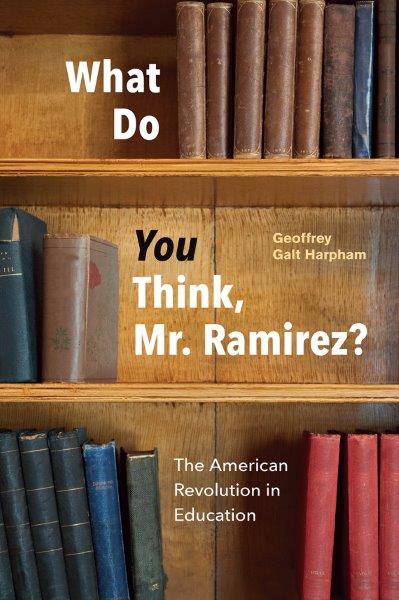The entirety of Geoffrey Galt Harpham’s slim but wide-ranging historical look at the rise of American English departments emerges out of a single anecdote. About 50 years ago, a young man, Mr. Ramirez, flees from Cuba to America. After years of struggle, he enrolls at a community college, where he takes a general education requirement in literature. In a class discussion about an impenetrable Shakespeare sonnet, the professor directs a question to the shy student: “Mr. Ramirez, what do you think?” 
This seemingly mundane moment alters the young immigrant’s life. He recounts, “It was the first time anybody had asked me that question.” This small interaction made him realize the power of his own opinion, the way his subjective viewpoint could carry weight in the public sphere. It was a radically liberating moment, one that ultimately led him to become an English professor himself.
I’m an English professor, too, and the question Mr. Ramirez encountered a half-century ago is a question I still ask in every class I teach. “What do you think?” is an endlessly applicable entryway into any text or class discussion, and I hardly ever think about why I ask it.
Harpham does think about it though. He sees the professor’s question to Mr. Ramirez as the product of a centuries-long tangle of historical and cultural forces. In Harpham’s mind, “What do you think?” is not an innocuous question at all. Rather, it’s underpinned by a complex patchwork of American political and educational institutions, messy democratic negotiations and influential bureaucratic maneuverings that ultimately created an environment in the mid-twentieth century where English departments became the country’s de facto authority on interpreting texts.
In a quick 175 pages, Harpham dives into this rich history, offering a broad tour of the varied, often contentious ways Americans have thought about textual interpretation. This history includes Puritan ways of reading the Bible; Madison and Jefferson’s different interpretive approaches to the Constitution; and Frederick Douglass’ inspired reading of that same document in his arguments for abolition.
But Harpham also explores higher education’s dryer, more bureaucratic workings. For instance, he scrutinizes Harvard’s post-war statement, General Education in a Free Society. A moment such as this illuminates the often-overlooked world of curricular decision-making, showing how committee decisions — framed as a “crusade against ignorance that a democracy must wage” — profoundly influenced general education programs nationwide, even reaching Mr. Ramirez’s classrooom.
For Harpham, America’s debate over how best to read texts stems from a history marked by glaring, many times troubling, paradoxes. One of the first things the anti-establishment, separatist Pilgrims did at Plymouth was to establish a central government. The Declaration of Independence lionized personal liberty, while eliding any mention of slavery. Lincoln’s decision for emancipation was deeply moral, but perhaps anti-democratic, an instance where one elected official’s decision superseded prevailing mass belief.
America’s ever-evolving democracy has struggled constantly with how best to balance disparate personal opinions and the needs and moral obligations of the public sphere. During higher education’s “golden age,” universities, and the nation at large, looked to English departments to teach students how to thoughtfully broker this thorny negotiation. The humanities were a “focus of democratic aspirations,” a critical institution for developing informed, empowered citizens.
In reading the Declaration of Independence, Harpham notes how the dynamic tension between the freedom of personal opinion and the facts of reality as they exist for the broader population lies at the heart of America’s founding documents.
A free people can choose their opinions and change them when they wish. But if the change is seen as arbitrary, whimsical, or merely opportunistic, then their opinions will count for little, and authority itself will suffer. The new opinion, like the old, must be seen to have some evidentiary basis so that those who make the change can plausibly claim to have been persuaded by the facts.
This sounds similar to the way I describe close reading to my students — subjective, but informed and shaped by actual textual evidence.
But in our current cultural moment, it also sounds downright rosy. Today, policymakers’ opinions regularly dismiss the overwhelming evidentiary basis for climate change. Presidential opinion categorizes any unflattering journalism as fake news. Minute by minute news updates reveal a world where opinions often seem troublingly arbitrary and opportunistic. Authority is most definitely suffering.
It is no coincidence these developments are occurring as the humanities are becoming further marginalized within higher education. The study of literature — harnessed so effectively a half-century ago for Mr. Ramirez — can still help harness the power of informed personal opinion. But those inclusive, liberating, life-altering moments don’t happen by accident; they’re a matter of political and educational will.
Harpham’s apology for the humanities will no doubt resonate with English professors, who know well how critical reading helps create empowered democratic citizens. But those very same professors have been lobbing similar arguments at administrators for years. Meanwhile, students continue to opt for other majors and administrators decrease resources for the humanities in response. These are necessary, incremental acts of institutional prioritization. And if you’ve ever been to a budget meeting, you know they’re seldom exciting. But as Harpham points out, dry, administrative committee work can have world-shaping consequences.
Dr. Michael Jauchen teaches creative writing and American literature at Colby-Sawyer College in New Hampshire.





















